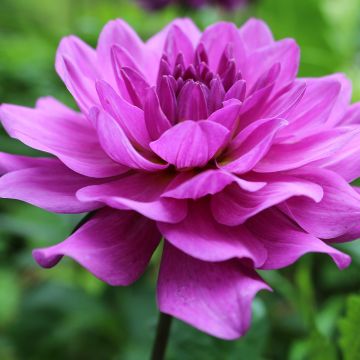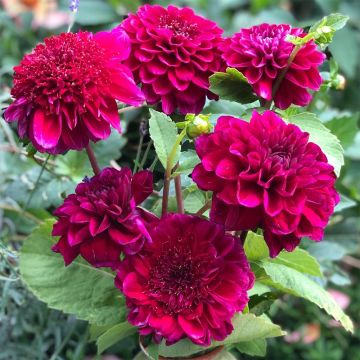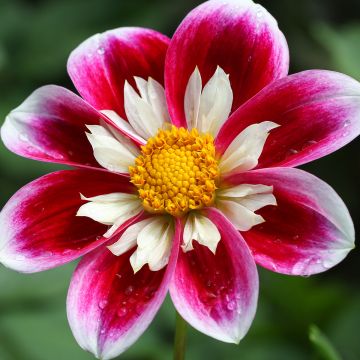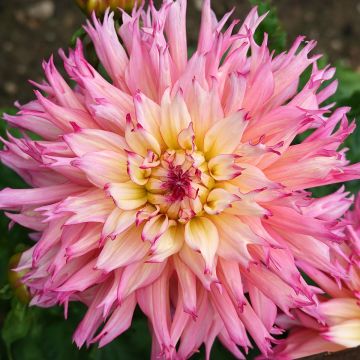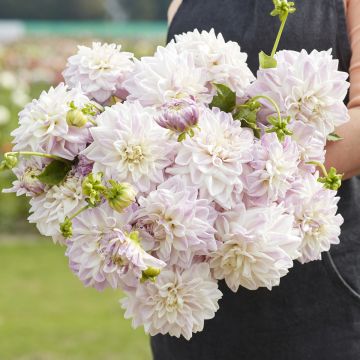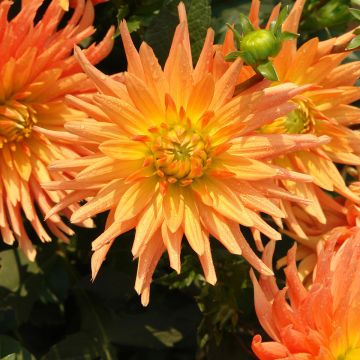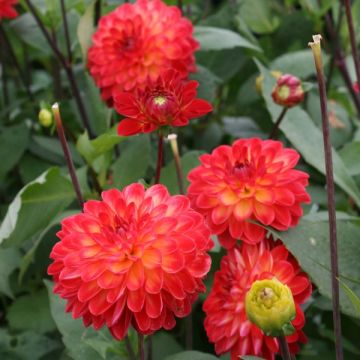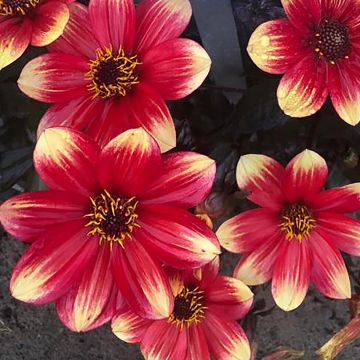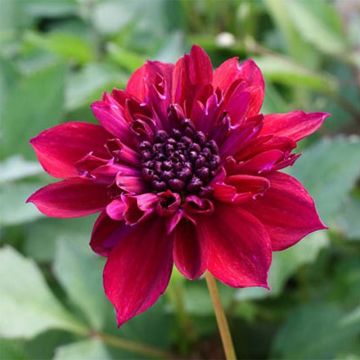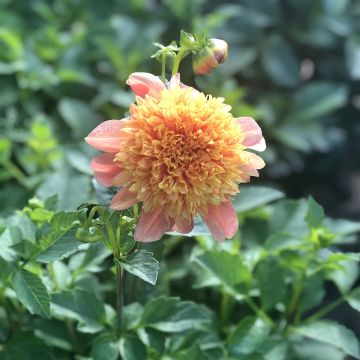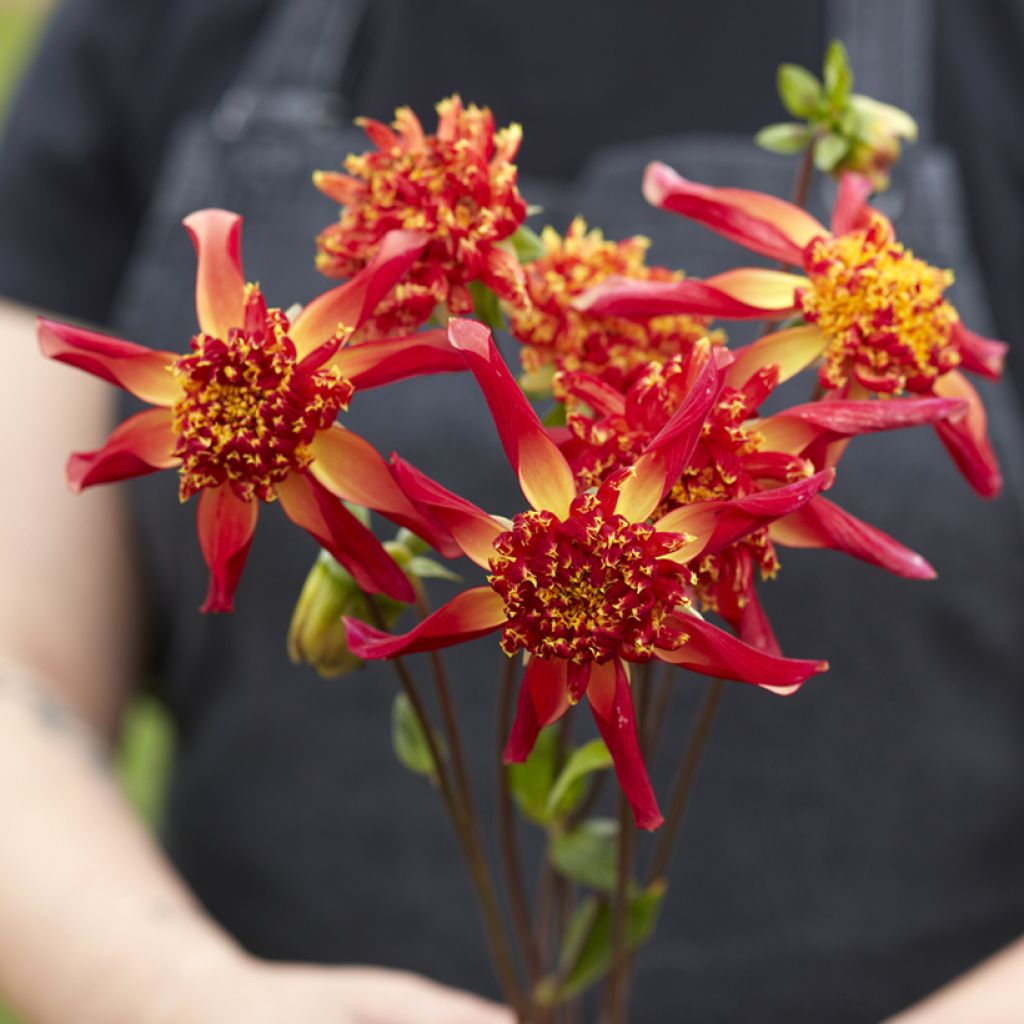

Dahlia Octopus Sparkle
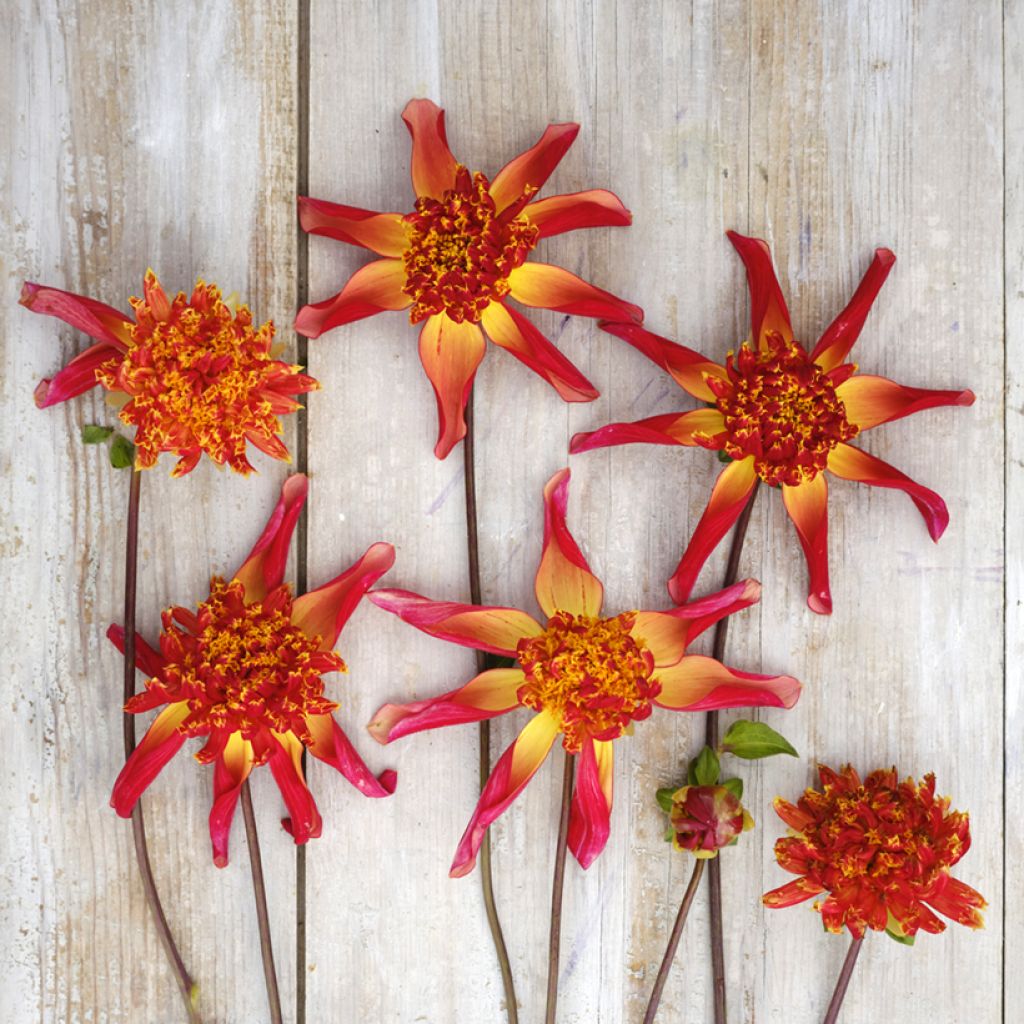

Dahlia Octopus Sparkle
Dahlia Octopus Sparkle
Dahlia Octopus Sparkle
This item cannot be shipped to the selected country
Delivery charge from €5.90
More information
Schedule delivery date,
and select date in basket
This plant carries a 6 months recovery warranty
More information
We guarantee the quality of our plants for a full growing cycle, and will replace at our expense any plant that fails to recover under normal climatic and planting conditions.
From €5.90 for pickup delivery and €6.90 for home delivery
Express home delivery from €8.90.
Does this plant fit my garden?
Set up your Plantfit profile →
Description
The Dahlia 'Octopus Sparkle' is a very original anemone-type dahlia that also borrows a lot from the honka type. Its tubular petals, very curled, coral red on the outside, yellow on the inside, surround a very double, fluffy heart, in a mix of yellow and red. Intriguing, its flowers do not go unnoticed in the garden, especially as they are carried high on rigid stems. This highly distinctive dahlia finds its place in an exotic garden as well as in a border with warm colours.
The Dahlias belong to the asteraceae family and are originally from the high plateaus of Mexico. Currently, the thousands of horticultural varieties obtained by humans have invaded, to our delight, gardens worldwide. They are plants with fleshy tubers and are not very hardy. Dahlias are classified according to the shape of their flower. 'Octopus Sparkle', registered in 2024, is classified in the category of Anemone Dahlias. In this group, the colourful ligules of the head are arranged in pompoms in the centre and surrounded by a collar of longer and wider ligules. 'Octopus Sparkle' with beautiful 10 cm star-shaped flowers, develops a very double, fluffy heart of the anemone type, but the ligules surrounding it are of the honka type, with their thin, incurved and detached petals. The overall flower elegantly combines coral red and yellow. The ligules in the centre are shorter, tubular and fringed, packed tightly together like a cushion. Flowering occurs from July to October, even November. The plant will reach a height of 1 m to 1.20 m. The very branched stems are hollow and the leaves are divided into 3 or 5 leaflets, which are toothed. The leaves are of a medium green, while the stems are more or less coppery.
To encourage repeat flowering, make sure to deadhead the flowers, or even better, regularly make colourful bouquets with it by combining it with other varieties in warm colours. 'Octopus Sparkle' pairs particularly well with subtle flowers and purple foliage of bugbanes or coral bells that will not overshadow the delicacy of its flowering. Offer it companions such as love-in-a-mist, cosmos, cornflowers and scabious that bloom at the same time, as well as the purple or violet blooms of asters, Salvia 'Caradonna' and Argentinian vervain. In an exotic garden, it pairs well with cannas bulbs.
Star of borders and cottage gardens, Dahlias confidently accompany the most beautiful flowers as well as the humble ones from the vegetable garden. They allow for beautiful flowering pots or charming bouquets. In Mexico, this tuber was first cultivated as a root vegetable for consumption. But its poor taste qualities relegated it to the status of an ornamental plant. Since then, the interest in their beautiful exuberance has never waned.
Report an error about the product description
Dahlia Octopus Sparkle in pictures


Plant habit
Flowering
Foliage
Botanical data
Dahlia
Octopus Sparkle
Asteraceae
Cultivar or hybrid
Other Dahlias
Planting and care
The Dahlia ‘Octopus Sparkle’ is easy to grow in all regions. For abundant flowering, it is good to follow a few simple rules: plant the tubers in a sunny position after the last frosts, rich, fresh, and well-drained soils are perfect. However, stagnant moisture would promote tuber rot. Feel free to amend the soil with compost and sand if needed. Work the soil deeply and enrich it, for example, with crushed horn or dehydrated blood. Place your tuber and crumble the soil well to fill without air pockets. Your dahlia should be covered with about 6 cm of soil. At the end of planting, water generously once and then repeat this watering regularly during the first 6 weeks to aid in rooting.
Dahlias are sensitive to cold, they need to be overwintered. In November, the first frosts will blacken the foliage, it's time to dig them up. Carefully unearth the tubers. Remove as much soil as possible. Let the foliage dry so the tubers can replenish their reserves. Then cut the stems to 10 cm. Spread your bulbs in a box on newspaper. Store away from frost in a dry, cool, dark place, such as a frost-free garage or attic. In the Southern regions, close to the coast, experiencing few frosty days per year, it is possible to leave them in place. In this case, simply cover the ground with a layer of leaves or straw for protection.
Planting period
Intended location
Care
This item has not been reviewed yet - be the first to leave a review about it.
Haven't found what you were looking for?
Hardiness is the lowest winter temperature a plant can endure without suffering serious damage or even dying. However, hardiness is affected by location (a sheltered area, such as a patio), protection (winter cover) and soil type (hardiness is improved by well-drained soil).

Photo Sharing Terms & Conditions
In order to encourage gardeners to interact and share their experiences, Promesse de fleurs offers various media enabling content to be uploaded onto its Site - in particular via the ‘Photo sharing’ module.
The User agrees to refrain from:
- Posting any content that is illegal, prejudicial, insulting, racist, inciteful to hatred, revisionist, contrary to public decency, that infringes on privacy or on the privacy rights of third parties, in particular the publicity rights of persons and goods, intellectual property rights, or the right to privacy.
- Submitting content on behalf of a third party;
- Impersonate the identity of a third party and/or publish any personal information about a third party;
In general, the User undertakes to refrain from any unethical behaviour.
All Content (in particular text, comments, files, images, photos, videos, creative works, etc.), which may be subject to property or intellectual property rights, image or other private rights, shall remain the property of the User, subject to the limited rights granted by the terms of the licence granted by Promesse de fleurs as stated below. Users are at liberty to publish or not to publish such Content on the Site, notably via the ‘Photo Sharing’ facility, and accept that this Content shall be made public and freely accessible, notably on the Internet.
Users further acknowledge, undertake to have ,and guarantee that they hold all necessary rights and permissions to publish such material on the Site, in particular with regard to the legislation in force pertaining to any privacy, property, intellectual property, image, or contractual rights, or rights of any other nature. By publishing such Content on the Site, Users acknowledge accepting full liability as publishers of the Content within the meaning of the law, and grant Promesse de fleurs, free of charge, an inclusive, worldwide licence for the said Content for the entire duration of its publication, including all reproduction, representation, up/downloading, displaying, performing, transmission, and storage rights.
Users also grant permission for their name to be linked to the Content and accept that this link may not always be made available.
By engaging in posting material, Users consent to their Content becoming automatically accessible on the Internet, in particular on other sites and/or blogs and/or web pages of the Promesse de fleurs site, including in particular social pages and the Promesse de fleurs catalogue.
Users may secure the removal of entrusted content free of charge by issuing a simple request via our contact form.
The flowering period indicated on our website applies to countries and regions located in USDA zone 8 (France, the United Kingdom, Ireland, the Netherlands, etc.)
It will vary according to where you live:
- In zones 9 to 10 (Italy, Spain, Greece, etc.), flowering will occur about 2 to 4 weeks earlier.
- In zones 6 to 7 (Germany, Poland, Slovenia, and lower mountainous regions), flowering will be delayed by 2 to 3 weeks.
- In zone 5 (Central Europe, Scandinavia), blooming will be delayed by 3 to 5 weeks.
In temperate climates, pruning of spring-flowering shrubs (forsythia, spireas, etc.) should be done just after flowering.
Pruning of summer-flowering shrubs (Indian Lilac, Perovskia, etc.) can be done in winter or spring.
In cold regions as well as with frost-sensitive plants, avoid pruning too early when severe frosts may still occur.
The planting period indicated on our website applies to countries and regions located in USDA zone 8 (France, United Kingdom, Ireland, Netherlands).
It will vary according to where you live:
- In Mediterranean zones (Marseille, Madrid, Milan, etc.), autumn and winter are the best planting periods.
- In continental zones (Strasbourg, Munich, Vienna, etc.), delay planting by 2 to 3 weeks in spring and bring it forward by 2 to 4 weeks in autumn.
- In mountainous regions (the Alps, Pyrenees, Carpathians, etc.), it is best to plant in late spring (May-June) or late summer (August-September).
The harvesting period indicated on our website applies to countries and regions in USDA zone 8 (France, England, Ireland, the Netherlands).
In colder areas (Scandinavia, Poland, Austria...) fruit and vegetable harvests are likely to be delayed by 3-4 weeks.
In warmer areas (Italy, Spain, Greece, etc.), harvesting will probably take place earlier, depending on weather conditions.
The sowing periods indicated on our website apply to countries and regions within USDA Zone 8 (France, UK, Ireland, Netherlands).
In colder areas (Scandinavia, Poland, Austria...), delay any outdoor sowing by 3-4 weeks, or sow under glass.
In warmer climes (Italy, Spain, Greece, etc.), bring outdoor sowing forward by a few weeks.

































